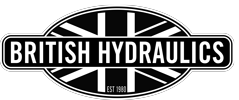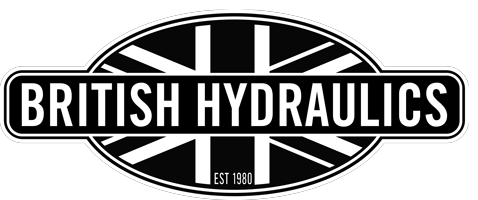If you insist on working with a company that has extensive experience in the design, manufacture and utilization of Industrial Hard Chrome for your cylinders, rollers, valves repair, you need look no further in the Lower Mainland, Vancouver than British Hydraulics Ltd.
Industrial Hard Chroming: Enhanced Surface Durability
In the realm of industrial manufacturing, achieving optimal performance and longevity of machinery and equipment is paramount. One of the key processes that has revolutionized the way industries approach surface engineering is industrial hard chroming. This advanced technique involves the deposition of chromium onto metal surfaces, imparting enhanced hardness, wear resistance, and corrosion protection. In this comprehensive guide, we delve into the intricacies of industrial hard chroming, exploring its applications, benefits, and the crucial role it plays in extending the lifespan of critical components.
Understanding Industrial Hard Chroming:
Industrial hard chroming, also known as hard chrome plating or chromium electroplating, is a surface engineering process that involves depositing a layer of chromium onto a substrate material. The primary goal is to enhance the material's surface properties, making it more resistant to wear, corrosion, and abrasion. This process is particularly valuable for components subjected to harsh operating conditions, such as those found in heavy machinery, hydraulic systems, and industrial equipment.
Key Applications:
Hydraulic Components: Hard chroming is widely employed in the manufacturing of hydraulic cylinders, piston rods, and other critical components. The added hardness and wear resistance significantly contribute to the durability and efficiency of hydraulic systems.
Ollers: Industries relying on precision and high-speed processes, such as printing, textile, and metal forming, benefit from hard chromed rollers. These rollers exhibit superior hardness, reducing friction and wear during continuous operation.
Pump Shafts and Valves: Components in pumps and valves face extreme conditions due to fluid flow and pressure. Industrial hard chroming provides an extra layer of protection against corrosion and erosion, ensuring prolonged service life.
Injection Molding Components: The demanding conditions within injection molding processes necessitate wear-resistant surfaces. Hard chroming extends the life of molds, screws, and other components, reducing downtime and maintenance costs.
Benefits of Industrial Hard Chroming:
Enhanced Hardness: Chromium is renowned for its hardness, and when deposited onto a substrate through hard chroming, it significantly increases the surface hardness of the material. This, in turn, reduces wear and extends the lifespan of components.
Corrosion Resistance: The protective chromium layer acts as a barrier, shielding the substrate material from corrosive elements. This is particularly crucial for components exposed to harsh industrial environments.
Improved Surface Finish: Hard chroming provides a smooth and uniform surface finish, contributing to reduced friction and improved performance of moving parts.
Dimensional Restoration: Industrial hard chroming is also employed for the restoration of worn or damaged components, effectively returning them to their original dimensions and functionality.
Industrial hard chroming stands as a cornerstone in the pursuit of durable and high-performance industrial components. Its ability to enhance hardness, resist wear, and protect against corrosion makes it a valuable process across various sectors. As industries continue to prioritize efficiency and longevity, the role of industrial hard chroming in maintaining and extending the life of critical equipment becomes increasingly indispensable.
We are the best in the industry. With some of the largest tanks in North America, we are able to plate flat and round surfaces of all shapes and sizes!
We will enhance the performance and extend the life of your valuable equipment. We use precision cylindrical grinding equipment for exact sizing and high quality finishing. With three large chrome tanks, we can easily accommodate large cylinders and parts.
You can feel assured of quality work from our team of specialists. They can fulfill any and all of your chrome plating needs, and meet or exceed your exacting standards. Whether you require a one-off or a production run, our facility can handle it all.
We pride ourselves on our attention to quality control procedures. With us, you can count on the highest quality hard chrome deposition. Independent qualified testing by QA registered chemists are carried out on all our tanks on a regular basis to ensure correct chemical compositions.
We're environmentally conscious, too! In a typically toxic industry, we run state-of-the-art containment and air scrubbing systems, and all four of our divisions are in complete compliance with environmental safety governmental regulations.
Repairing Industrial Hard Chrome
Industrial hard chrome plating, a hallmark in surface engineering for enhanced durability, may encounter wear or damage over time due to the harsh conditions it often faces. The process of repairing industrial hard chrome is a specialized art, requiring precision and expertise. In this article, we explore the intricate steps involved in revitalizing hard chrome surfaces, ensuring that crucial components maintain peak performance in the industrial landscape.
Assessment and Inspection:
The journey of repairing industrial hard chrome begins with a thorough assessment and inspection of the damaged component. Skilled technicians meticulously examine the surface, identifying areas of wear, corrosion, or other imperfections. This initial step is crucial in determining the extent of damage and formulating an effective repair strategy.
Stripping the Existing Chrome:
Once the assessment is complete, the next step involves removing the existing hard chrome layer from the damaged component. This is typically achieved through a carefully controlled chemical stripping process. The goal is to selectively remove the damaged chrome without compromising the integrity of the underlying substrate material.
Surface Preparation:
With the old chrome layer removed, the substrate undergoes meticulous surface preparation. This may involve polishing, grinding, or other techniques to ensure a clean, smooth, and even surface. Proper surface preparation is essential for achieving optimal adhesion of the new hard chrome layer and ensuring the repaired component's longevity.
Masking and Protecting:
In situations where only specific areas require repair, masking techniques are employed to protect unaffected regions. This precision ensures that the repair is focused on the damaged sections, preserving the original dimensions and functionality of the component.
Electroplating Process:
The heart of repairing industrial hard chrome lies in the electroplating process. In a controlled environment, the damaged component is immersed in a bath containing chromium ions. An electric current is applied, causing the chromium ions to bond with the substrate material, forming a new hard chrome layer. The thickness and properties of the new layer are precisely controlled to match the original specifications or enhance the component's performance.
Post-Plating Finishing:
After the electroplating process is complete, the repaired component undergoes post-plating finishing steps. This may include polishing, buffing, or other surface treatments to achieve the desired appearance and ensure a smooth, uniform finish. These finishing touches contribute not only to the aesthetic appeal but also to the functionality and performance of the repaired component.
Quality Control and Testing:
Before the repaired component is reintegrated into the industrial machinery, it undergoes rigorous quality control and testing. This ensures that the repaired hard chrome layer meets the specified standards for hardness, adhesion, and corrosion resistance. Only components passing these stringent tests are deemed fit for return to service.
The meticulous process of repairing industrial hard chrome is a blend of craftsmanship and scientific precision. As industries continue to rely on the durability and performance of hard chrome-plated components, the expertise involved in the repair process becomes an invaluable asset. Through careful assessment, skilled craftsmanship, and rigorous quality control, the repair of industrial hard chrome ensures that critical components not only regain their functionality but also stand resilient against the demanding challenges of industrial operations.




